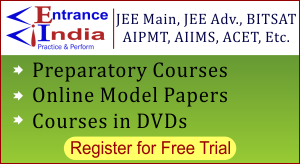| Lok Sabha Constituencies in Sangrur district, Punjab (MP Constituencies) | Fatehgarh Sahib Sangrur |
| MLA Assembly Constituencies in Sangrur district, Punjab | Amargarh Dhuri Dirba Lehra Malerkotla Sangrur Sunam |
About Sangrur DistrictSangrur District :
The district of Sangrur was formed in 1948. The name of the district from its headquarters, Sangrur, said to be have founded by one Sanghu, a Jat, about 400 years back. The Sangrur District as of today comprises parts of a few erstwhile distinct administrative units, the Philkian States if Jind, Nabha and Patiala: the Mohammadan State of Malerkotla; and some parts of then district of Ludhiana. It is interesting to note that Sangrur itself was earlier a part of Nabha State. History of the district is, therefore, complicated, although it is traceable through its various components. In brief, history of the district is given as under.
The excavations carried out by the Archeological Department, Punjab, at the various places of Malerkotla Tehsil of Sangrur District, give sufficient proof that the district is quite rich in ancient history. From the close of scrutiny of the available data, the researchers have traced the ancient history of the district from the pre-harappan period. Almost the whole of the excavated places fall in Malerkotla Tehsil of the Sangrur Deistrict. The important sites so far excavated in the Malerkotla Tehsil are as under
District at a Glance :
- District –
- Headquarters –
- State
- Total –
- Rural –
- Urban –
- Population –
- Rural –
- Urban –
- Male –
- Female –
- Sex Ratio (Females per 1000 males) –
- Density (Total, Persons per sq km) –
- Assembly
- Loksabha – 1
- Official Website –
Tourist Places :
Akoi :
Situated in the Sangrur Tehsil on the Malerkotla-Sangrur road, village Akoi lies about 5 km north of Sangrur, the district headquarters.
In the village, there is a gurudwara said to be associated -with the visits of Guru Nanak Dev, Guru Hargobind and Guru Tegh Bahadur, the first, sixth and ninth Sikh Gurus respectively. It is said that Guru Nanak Dev visited this place after visiting Nankiana. The sixth Guru, Guru Hargobind also stayed here about seven months. He blessed the place that milk will be available here in abundance, and his words are proving true. Guru Tegh Bahadur, the ninth Sikh Guru is also said to have visited this place on the way to Delhi.
Maharaja Hira Singh of erstwhile princely state of Nabha, constructed the building of the gurudwara. This old building is being demolished and the new one is coming up. Three hundred and twenty-five bighas of land in Khilrian, Badrukhan and Akoi villages belongs to the garudwara.
The village has a primary school, a primary health centre and a veterinary dispensary. A Government poultry farm is also functioning in the village.
The inhabitants of the village are mostly Khangoora Jats.
Badrukhan :
Badrukhan is about 5 km from Sangrur, the district heaquarters, on Sangrur-Barnala road. There are two versions about the nomenclature of the village. One is that it was named after Badru, a pandit of this village, by Raja Gajpat Singh. Another version, which is more believable is that when Raja Gajpat Singh took control of these villges,(Vada Agwarh, Vichla Agwarh, Dalamwal, Dhaliwas and Thagan wali Patti) at that time very big trees Rukh were standing here on the basis of which it came to be called Badrukhan Bade rukhan
The present village Badrukhan consists of five small villages, which, daring the times of Raja Gajpat Singh, were amalgamated and came to be known as Badrukhan. Prior to it, these villages were in Badbar thana and were being ruled by Nawab of Malerkotla. The residents of these villages were feeling insecure on account of the dacoities committed by Muslims. The leaders of these five villages, under the leadership of Pandit Badru, approached Gajpat Singh, the Maharaja of Jind, for their security and gave him 1700 bighas of land. Maharaja Gajpat Singh amalgamated these villages and named it Badrukhan. In 1763, when Gajpat Singh captured the town of Jind, Badrukhan was made the capital of Jind State. He also built the fort here.
Badrukhan is believed to be the birth place of Maharaja Ranjit Singh. Raj Kaur,daughter of Gajpat Singh gave birth of Maharaja Ranjit Singh on 13 November 1780 here. Maharaja Hira Singh of Nabha was also born here, Lieutenant General (Retd.) Harbaksh Singh (Vir Chakra). Major General Gurbaksh Singh (DSO and OBE)-and Major Rajnit Singh also belong to this
In the village, there exists a smadh of Baba Guddar Shah who is said to have taken out the body of Raj Kaur, daughter of Maharaja Gajpat Singh buried in the large earthen vessel. Maharaja Gajpat Singh distributed large sweet thick cake of bread. Every year on the anniversary of Baba Guddar Shah, large sweet thick bread is baked and distributed as prasad.
The village has a Government high school, a 4-bedded subsidiary health centre and a post office
Bagrian :
Situated on the Malerkotla-Nabha road, Bagrian lies about 18 km south-east of Malerkotla, Though now in Malerkotla. Tehsil, it was not a part of the Malerkotla Princely State but was being ruled by the British. Bagrian was given to Bhais of the village by Bhikhan Khan, the Raw of Materkotla State, but it was captured by Britishers as the Sikhs of Bagrian were not in favour of the British
There is a fort at Bagrian which was built by S. Arjan Singh in the begining of the 20th-century. The Bhais still run langar (free kitchen) hen daily; This tradition of langer was started from the time of Sri Hargobind the sixth Guru. For the preparation of langar wet fuel is used. It is said that the sixth Guru blessed that even wet fuel would work.
ln the fort a gurudwara has been built whose design and size is that of Golden Temple.
At Bagrian, an industrial unit, namely ‘Bagrian Shoes’ for the manu facture of shoes is being set up, in the large-scale sector.
Bhawanigarh :
Situated at a distance of 19 km east of Sangrur, the district headquarters, on the Patiala-Sangrur road, Bhawanigarh is a sub-tehsil of the Sangrur Tehsil. It is also connected by road with Chandigarh (102 km), Patiala (37 km), Nabha (16 km) and Sunam {28 km).
Bhawanigarh was originally known as Dhodan, the name having been lent to it by Jats of Dhodan, a sub-clan of Bajha clan or got. Prior to independence, it was tehsil headquarters of Karamgarh Nizamat of Patiala Princely State.
As tradition has it, a sheep at the shrine of goddess Bhawani defended itself against two wolves, during the days of Baba Ala Singh who was prevailed upon by a sadhu to build on the spot a fort and name it Bhawanigarh. The fort was constructed in 1754.
There are a government higher secondary school for girls, a government high school for boys. A degree college and 4-bedded primary health centre at Bhawanigarh.
A class III Municipal Committee is functioning in the town since 1945





